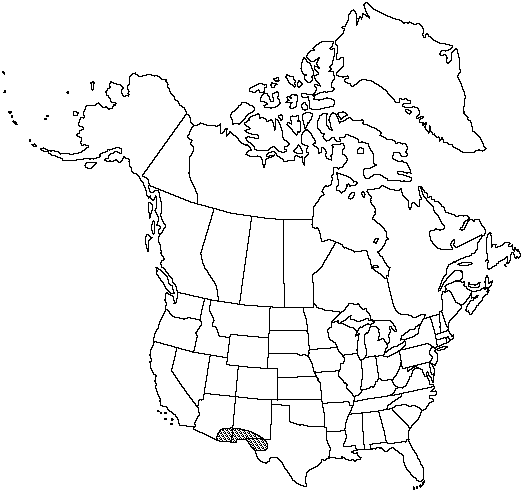Asplenium palmeri
Contr. U.S. Natl. Herb. 13: 39. 1909.
Roots not proliferous. Stems short-creeping, unbranched; scales black with lighter margins, linear-lanceolate, 1.5–3 × 0.1–0.4 mm, margins entire. Leaves monomorphic. Petiole purplish black, lustrous, 0.5–3 cm, 1/3–1/20 length of blade; indument of black filiform scales at base. Blade linear, 1-pinnate throughout, 7–17.5 × 0.9–1.8 cm, thick, glabrous; base gradually reduced; apex gradually reduced to whiplike rooting tip. Rachis purplish black throughout, lustrous, glabrous or nearly so. Pinnae in (12–)20–40 pairs, oblong; medial pinnae 6–9 × 3–4 mm; base broadly cuneate or auriculate; margins crenate-serrate; apex obtuse. Veins free, obscure. Sori 3–7 pairs per pinna, on both basiscopic and acroscopic sides. Spores 64 per sporangium.
Habitat: Shaded rocky slopes, wet ledges, often in protected places
Elevation: 900–2000(–2750) m
Distribution

Ariz., N.Mex., Tex., Mexico, Central America in Guatemala, Belize.
Discussion
Selected References
None.